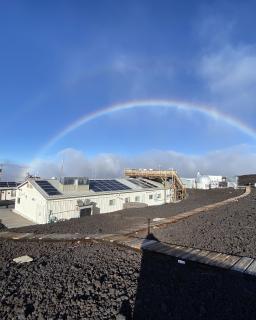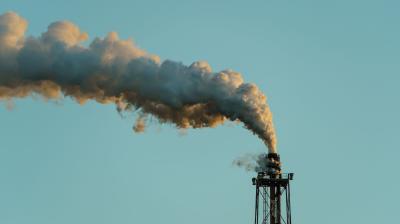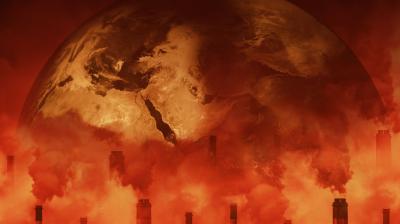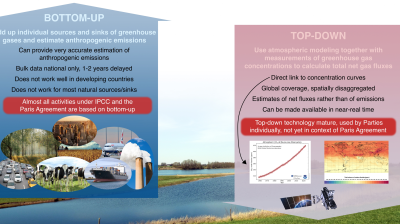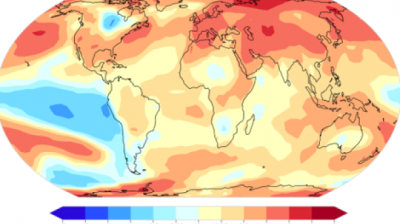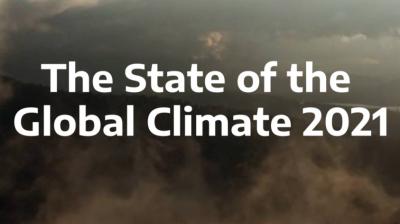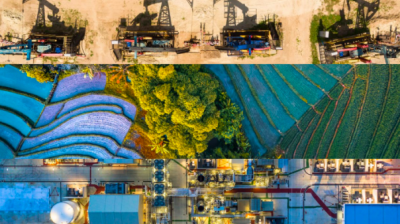
Greenhouse gases
Greenhouse gases (GHGs) in the atmosphere trap heat from the sun and keep the Earth warm, this is known as the greenhouse effect. GHG emissions from human activities provided the majority contribution towards global warming of 1.1 °C.
Overview
There are two greenhouse gas effects - natural and enhanced. The natural greenhouse effect is caused by natural amounts of greenhouse gases and is vital to life on this planet. In the absence of the natural greenhouse effect the surface of the Earth would be approximately 33 °C cooler. The enhanced greenhouse effect refers to the additional radiative forcing resulting from increased concentrations of greenhouse gases (GHGs) caused by human activities.
The main GHGs with rising atmospheric concentrations are carbon dioxide (CO2), methane (CH4), nitrous oxide (N2O), hydrochlorofluorocarbons (HCFCs), hydrofluorocarbons (HFCs). Due to long lifetime of the main GHGs they accumulate in the atmosphere.
Emissions from human activities drive the enhanced greenhouse effect and cause climate change. The world is now warming faster than at any point in recorded history.
This change in the atmosphere's chemical composition leads to changes in weather patterns and natural imbalances, which pose enormous risks for human beings and all life on Earth.
Impact
According to WMO’s Greenhouse Gas Bulletin, released in 2021, atmospheric levels of the three main greenhouse gases - carbon dioxide, methane and nitrous oxide all reached new record highs.
Atmospheric carbon dioxide reached 149% of the pre-industrial level in 2021, primarily because of emissions from the combustion of fossil fuels and cement production. Roughly half of the CO2 emitted by human activity remains in the atmosphere, while the other half is taken up by land and ocean, which act as sinks - systems able to absorb GHGs. The balance between sources and sinks changes yearly due to natural variability.
With an increase in future GHG emissions, land ecosystems and oceans become less effective at absorbing CO2 and acting as a buffer against temperature increases, which could lead to more warming in the Earth's atmosphere.
Methane (CH4) accounts for about 16% of the warming effect of long-lived GHGs and stays in the atmosphere for about a decade. 40% of methane in the atmosphere comes from natural sources, such as wetlands, while human activities, for example, rice agriculture and biomass burning, account for the remaining 60%.
Nitrous Oxide (N2O) is a potent greenhouse gas and ozone-depleting chemical. It accounts for about 7% of the warming caused by long-lived GHGs. Human-induced sources, such as fertilizer use and biomass burning, account for approximately 40% of its GHG presence.
WMO's response
The Global Atmosphere Watch (GAW) observes, analyses and publishes greenhouse gas data collected by fifty countries worldwide from the High Arctic to the South Pole. The greenhouse gases monitored include:
- Carbon Dioxide (CO2) (incl. Δ14C, δ13C and δ18O in CO2, and O2/N2 Ratios)
- Methane (CH4)
- Nitrous Oxide (N2O)
- Halocarbons and SF6
- Molecular Hydrogen (H2)
The World Data Centre for Greenhouse Gases (WDCGG) at the Japan Meteorological Agency collects and distributes the data. The GAW Scientific Advisory Group for Greenhouse Gases (SAG-GHG) advises on the programme development.
Every year, GAW issues the Greenhouse Gas Bulletin, which reports on the latest trends and atmospheric burdens of the most influential, long-lived greenhouse gases, carbon dioxide (CO2), methane (CH4), and nitrous oxide (N2O), as well as a summary of the contributions of the lesser gases.


